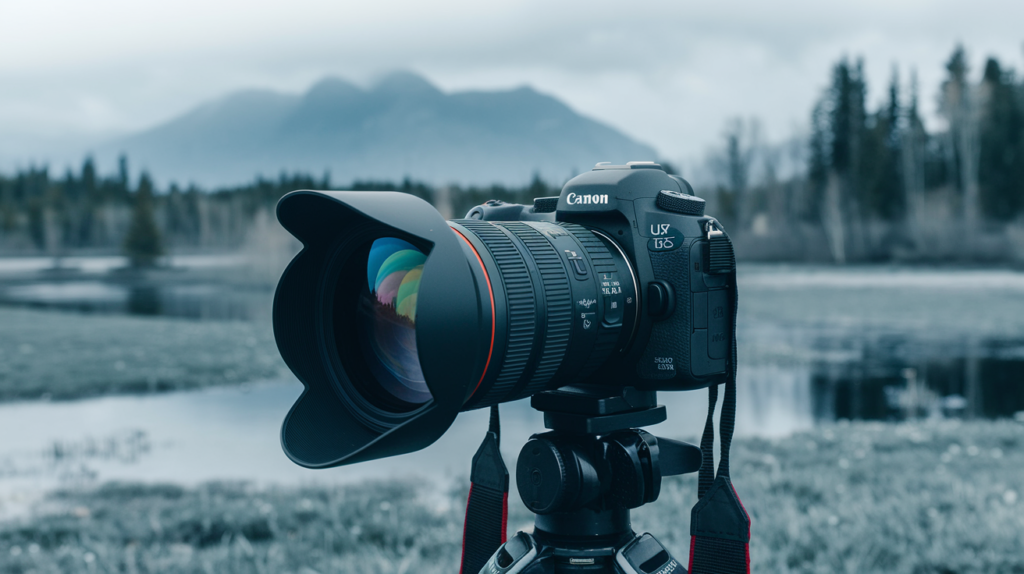Understanding UV filters and their importance is important if you want to take better pictures or protect your equipment from UV light. Understanding the basic functionality of UV filters can help you understand the best time to use them and when you should avoid using UV filters.
Contents
The Basics of the UV Lens Filters

While there are many different types of camera lens filters,UV filters are among the oldest, and it has been used for generations to help photographers protect their equipment. The UV lens filter provides camera lens protection as well as protection of your film from the UV-A and UV-B rays that the sun emits. A UV protection filter is especially important when you’re taking pictures using traditional film or filming video.
UV filters help protect the film from the ultraviolet light that could otherwise damage it while it’s in the camera. While digital cameras don’t have film that can be damaged, some photographers still use the UV filter lens under certain conditions. This is because other components in the camera such as the lens may also be damaged or warped by direct exposure to natural UV light rays from the sun.
Know What Type of Protection it Provides

Image Credit © Michał Huniewicz/CC BY 2.0
Prior to the use of the UV protection lens filter, photographers had no protection against the sun’s rays. As a result of the UV-A and UV-B rays bombarding the camera’s lens, photographers found that there was damage to their lens and discoloration in their photos. In particular, there was significant bleeding of blue hues in the images.
Once the UV filter lens was invented, photographers could use a lens filter to cover the lens on their camera to protect it from ultraviolet light damage. While UV filters don’t prevent exposure to all ultraviolet light rays, it does limit exposure to a very small amount. This amount of protection from this lens filter is enough to ensure the colors in the images won’t bleed or blur.
Additionally, the UV filter lens provides protection from other elements in the environment. For example, using the UV filter on windy days will prevent wind damage and scratches caused by blowing dust when shooting outdoors.
If you’re photographing a wedding or another public event, the UV protective filter also protects the camera lens against damages caused by accidental spills and similar mishaps. Particularly if you’re photographing children, the lens can give unintended protection.
It’s important to know that the UV filter lens won’t protect your camera’s lens from the damage caused by a drop or fall. A strong impact will still crack your lens even if the UV protection filter is covering the lens at the time of the accident. While the UV filter does protect against scratches and dust, it shouldn’t be assumed that it will protect against all types of damage.
How Does it Affect Image Quality?

Image Credit © Aerial Motion Photography/CC BY 3.0
Another factor to consider is how the UV protection filter will affect the image quality of the photographs you’re taking with the camera. A UV lens filter won’t change the image quality drastically, there will be slight changes as you can see from the aerial shot image above. Much in the same way that eyeglasses or contact lenses alter the quality of your vision, the UV lens filter adds an additional layer through which light must travel.
As a result, image quality is distorted slightly. In more specific terms, the amount of light that makes contact with your camera lens will be lowered by a 0.5% to 5% ratio. This causes lower resolution that can be slightly discerned.
The effect is slight enough that it can usually be fixed in the editing process. It’s also important to know that the quality of your UV filter lens will affect the distortion you see in your photographs. You can minimize the effect by investing in a better quality UV lens filter.
When Does a UV lens Filter Become a Problem?
If a UV lens filter offers protection from a variety of elements, many beginning photographers think it makes sense to keep the UV filter lens on all of the time. While that is something you can try, doing so will depend on which kind of photographs you intend to take.
The slight distortion caused by the UV filter lens may not be noticeable in photographing events or in working outdoors, but there may be other occasions in which the image quality is a priority. If you’re working in a studio or pursuing artistic photography, you’ll get better quality pictures & video without the UV filter lens.
Additionally, photoshoots in these situations won’t expose your camera lenses to environmental hazards, so you won’t really need the protection that the UV filters provide.
When You Should Use a UV Filter Lens
You may think you don’t need a UV filter for your camera since you will always want the best quality of photographs. After all, you can use a soft cloth and lens cleaning solution to clean off liquid spills, dust, and other debris. Certainly, that’s true, but too much cleaning will cause micro-abrasions to develop.
Over time, those minute scratches will become more and more visible until they ultimately affect the quality of the pictures you take. It’s better to use the UV protection lens filter when it is necessary. Add the camera lens UV filter when shooting outdoors where it’s particularly windy, dusty, or snowy.
You should also use lens filters if you’re in a crowded area where other people will be close to your camera. Keeping the UV filter lens on the camera will protect it against accidental food and beverage spills.
Using a UV vs. CPL Filter
CPL lens filters (also known as circular polarizer/linear filters) are used to diminish the glare given off by reflective surfaces. Even though this isn’t the same type of protection that a UV lens filter offers, it can provide protection for your camera lenses in some of the same types of situations.
For example, both lens filters are useful in protecting against physical damage caused by dust, debris, or liquid. While the UV lens filter guards against UV-A and UB-B rays, the CPL filter protects against polarized light but not UV light. Since they offer different types of protection, they can be used individually or together.
The CPL filter lens is preferable over the UV lens filters when you want to alter the color balance in an image. Since this lens filters out glare and reflections, you can get a truer representation of color in the photograph. This filter makes it easier to alter colors to create darker or blighter hues since reflections from all angles can be minimized.
This filter is also helpful when you want to take pictures through glass or through the surface of a body of water. Since the CPL lenses dissolve the glare, you can see past the surface with your camera.
Using UV Filters vs. Skylight Filters
A skylight filter also filters out most UV light rays, but it doesn’t cause the same distortion to the image quality. The skylight filter comes in two different strengths, which are Skylight 1A and Skylight 1B. The downside to a skylight filter is that it does cause a magenta hue in the image. For this reason, the UV lens filter is preferred in most scenarios. The skylight filter is preferred when you want to strengthen the pinkish hue of the skin or when you’re photographing with color slide film.
How to Shop For a UV Filter
When you start shopping for a UV lens filter, you’ll notice that the prices range widely from $10.00 up to $30.00. While they may all look the same and serve similar functions, you’ll want to look a little deeper if you want to make sure you’re getting a good quality UV filter. The condition of the filter will be affected by the type of glass used in its construction and other factors.
Even if you don’t know much about glass processing, you should know that a thinner lens will give you better quality results. You’ll also want to look for a filter lens that has a thin layer of colored film between two glass lenses. This helps reduce air between the two halves of the lens and minimizes imperfections in the lens filter.
You should pay attention to the retaining rings to determine the quality of the filter as well. An aluminum ring will usually be used on low-end products since it’s a cheaper material to obtain. Unfortunately, this means it also dents more easily. For a better quality UV protection lens filter, look for a brass retaining ring. that has a more expensive lens.
The best way to understand the use of the UV protection lens is to start experimenting with it. Try using it in a variety of scenarios to see how it affects the image quality. As previously mentioned, there may be environmental conditions in which using the UV protection lens filter will help you protect your equipment (like UV light from the sun). You’ll have to judge the best times to use it as you gain more experience. With practice, you’ll develop the expertise to know which lens filters to use to get the best results in any situation.

About Author
Connor Kovack is a Los Angeles based professional photographer & videographer with over 6+ years of experience. Connor is CEO of KovMedia and specializes in Music Videos, Commercials, Photography & More.
